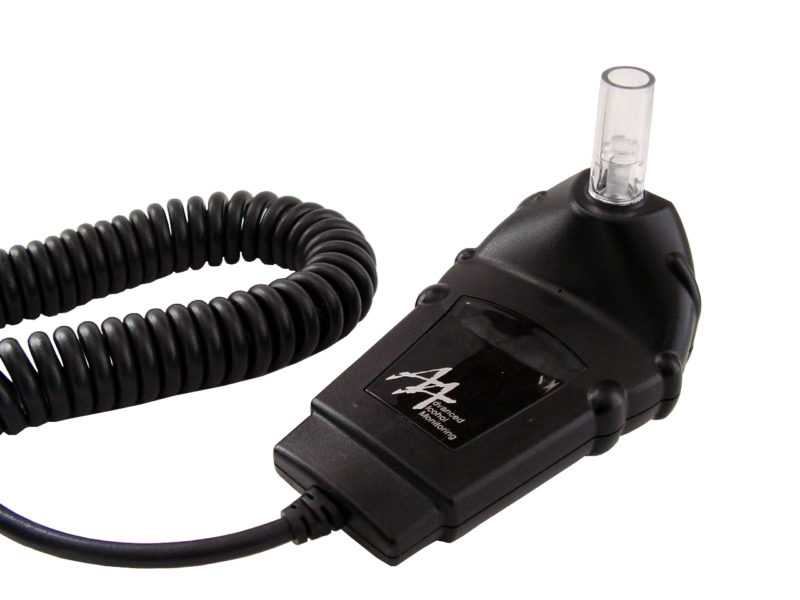If you are convicted of a New York DWI charge, be prepared to install and maintain an ignition interlock device on each vehicle you own and operate. Most misdemeanor and felony DWI convictions in the State of New York now require ignition interlock as a part of any probation or conditional discharge. Offenders with an ignition interlock requirement are then monitored by the Department of Probation or sentencing county, where applicable. As a resource for those in need, we’ve compiled the following overview.
Where to Obtain an Ignition Interlock Device
You must obtain your ignition interlock device from a New York State approved service provider. Ignition interlock devices have different classifications (Class I, Class II, and Class III), set forth by the Division of Probation and Correctional Alternatives. The program monitor chooses the classification requirement for each offender, who then has his or her choice of device under that classification. Each device meets state and federal criteria, and is capable of reporting data. All devices operate on a breathalyzer system, with Class IIs operating on biometric recognition, and Class IIIs using GPS.
How it Works
When you get into your vehicle, before you can start it, the ignition interlock device requires you to submit a breath sample. If you blow a 0.025 or greater, you have failed the test, and the device will prevent your vehicle from starting. As you drive, you must submit to “rolling tests” or repeat tests, and if at any point during these re-tests you register a 0.025 BAC or higher, the device will shut off your car due to a failed test. Your results, the number of attempts to start the vehicle, and other data is then collected and monitored by your specific probation or ignition interlock program.
The interlock device must remain on any vehicle you own or operate, including employer-owned vehicles, for a minimum of six months or the period of time set forth by the court. Aggravated charges and repeat offenders may be required to maintain the ignition interlock device for at least five years.
Tougher Ignition Interlock Laws Mean More than Just More DWI Charges
DWI laws have an impact on people other than drunk drivers. While the general public may benefit from stricter laws, making roads safer, private corporations may also stand to gain from increased DWI charges. That exact story is running rampant on the web this week, as Washington State lawmakers consider mandatory ignition interlock devices as a condition for release from prison, for those drivers who have DWI convictions on their records. As the Yakima Herald reports, five Washington-based corporations have helped to draft that law, and stand to gain in the profit department if the legislation ultimately passes.
Washington has a rich history when it comes to ignition interlock devices. In 2004, Washington became one of the first states in the nation to require ignition interlock devices for first time DWI offenders. Currently, approximately 20,000 residents in Washington use such gadgets in their cars, and this number is sure to increase if the tougher legislation passes. According to the Seattle Times, if the new legislation passes, ignition interlock corporations could see an increase of around 4,500 customers each year. Some critics of the close relationship between ignition interlock device companies and lawmakers believe that the current system encourages lax state oversight of the interlock devices, and allows the corporations to turn a profit when the devices fail to correctly identify a driver’s blood alcohol level.
Whether Washington State ignition interlock corporations will stand to gain from the prospective laws or not, ignition interlock devices are a serious matter for many drivers. Ignition interlock devices can pose as an extreme inconvenience and can be distracting. Furthermore, they may be an embarrassment to some drivers.
The attorneys at Nave DWI Defense Attorneys have experience in defending ignition interlock device cases. In one case, People v. M.M., the Nave DWI Defense Attorneys client had blown into the ignition interlock device installed on his car, and the device read that he had a .10% blood alcohol level. The reading prompted the District Attorney to want to find that the client had violated his previous conviction, which included a conditional discharge involving the ignition interlock device. Nave DWI Defense Attorneys attorneys argued that the client had not violated any part of his plea because the condition was not that he would not drink or pass each blow into the device, but rather only that he install it. The judge agreed with the Nave DWI Defense Attorneys attorneys’ argument, and the client was not penalized any further. Without the assistance of Nave DWI Defense Attorneys attorneys, the client may have faced probation or jail.
Penalties for Circumventing Ignition Interlock Devices
New York drivers convicted of DWI face a wide variety of harsh penalties, including a requirement to install and maintain an ignition interlock device. These devices are intended to prevent future DWIs by requiring a driver to use a breathalyzer attached to the vehicle engine. Some drivers have learned the hard way that trying to circumvent or alter these devices can lead to additional charges and penalties beside those stemming from the DWI charge.
Driving While Intoxicated, or DWI, is a criminal offense that applies to intoxicated drivers. When a driver has a blood alcohol content (BAC) level of 0.08% or higher, they face a DWI charge. A first time DWI conviction is a misdemeanor conviction that creates a permanent criminal record. This conviction may lead to multiple penalties including steep fines and surcharges, jail time, driver’s license revocation, and a requirement to install and maintain an ignition interlock device for up to one year. These penalties increase with subsequent DWI convictions.
Ignition interlock devices are attached to a vehicle engine and will not allow the car to start until the driver utilizes the device. Basically, this interlock device is a breathalyzer that registers a driver’s BAC level. Once the driver blows into the device, often located on the vehicle dashboard, the interlock device will either allow or prevent the engine from turning over. Ignition interlocks prevent an engine from starting if the driver has any level of alcohol in their system. If alcohol is detected, the device will only allow the car to start once a totally clean breath sample is given.
Given that interlock devices cannot distinguish whether the convicted driver is actually the person providing the breath sample, many have tried to circumvent the device by having someone else blow into the interlock breathalyzer. However, such action can lead to another charge, Circumvention of Interlock. Such an offense occurs when a motorist, who is ordered to install and maintain an Ignition Interlock Device on any vehicle they own or operate:
- Has another person blow into the interlock;
- Tampers or alters an otherwise operable Interlock Device; or
- Operates a motor vehicle without an Interlock Device, and that vehicle was ordered to have an Interlock Device installed in it.
Both the person required to have the Interlock Device, and the person who blow into the device are subject to penalties. Circumvention of Interlock is a Class “A” misdemeanor punishable by up to year in jail.
The Benefits and Problems
Over the years, the penalties of being convicted of a drinking and driving offense have become more and more severe and costly. A piece of the more recent legislation regarding drinking and driving, commonly referred to as “Leandra’s Law”, mandates that anyone convicted of a subsection of Vehicle and Traffic Law sections 1192-2 and 3 be required to install and maintain an Ignition Interlock Device (IID) in any vehicle they own or operate for a period of between 6 and 12 months.
An IID is similar to a portable breathalyzer that is installed within a vehicle and prevents the vehicle from being started until the user blows into the device. If the presence of alcohol is detected, the IID will prevent the car from starting. If alcohol is detected during several attempts, the device can “lock out” the user, requiring a trip to the installer to have it reset. The motivation behind this requirement is a noble one, it aims to prevent individuals from operating a vehicle after they have consumed alcohol and therefore protect the general public. While an IID can be very effective at preventing an intoxicated or impaired individual from operating a vehicle with the device installed, it is far from a perfect solution and the implementation of this requirement has been met with many obstacles.
Perhaps the biggest problem is one of circumvention. While the Court may order that an individual only drive a vehicle with an IID installed, it does little to functionally restrict an individual’s access to cars without the device installed. One common problem involves the family members of a defendant who own cars that are not in the defendant’s name, but the defendant would have access to. Or alternatively, when a defendant transfers ownership of his vehicle prior to being sentenced. The best that courts can do is remind the defendant that should he be caught driving a vehicle without the IID installed during the period he is required to have one, he can be charged with a separate misdemeanor. In both instances, the defendant would have easy access to vehicles without the IID installed, and yet would not technically own them.
This presents a dilemma to Courts. While the spirit of the law requires that the defendant install an IID on all the cars he has access to, if the vehicles are in someone else’s name, the Court cannot force that individual to install an IID in their vehicle. To do so would be forcing a third party not involved in the case to be punished for the actions of the defendant. This functionally defeats the purpose and intent of the new law and explains why now it is common practice for attorneys to advise their clients to transfer ownership of their vehicles prior to sentencing. However, this is only an appropriate solution for individuals who do not need to drive during the length of their license suspension/revocation. This is because IID requirement follows the individual, not the vehicles. So if someone convicted of a DWI decides to rent a car during the period they are required to have an IID installed, they would not be able to drive the rental car without the device.
Another problem associated with the IID requirement involves the timing of its installation. If individuals had a valid license at the time of their arrest, they are typically entitled to what is called a “20 day stay” of any license suspension or revocation. This means the suspension or revocation would not take effect until 20 days after the individual is sentenced. This would allow the individual to drive without restriction in order to allow them to get their affairs in order prior to the implementation of their suspension/revocation. However, the IID requirement takes effect immediately at the time the individual is sentenced. This leads to instances where an individual technically is granted full driving privileges for 20 days but is unable to use them until he is able to get the IID installed in his car. For people who need to drive without interruption (for work or other purposes) this can often be unacceptable. To remedy this, an individual would need to have the IID installed prior to being sentenced and therefore prior to the IID requirement taking effect. In many instances this is not a problem, interlock providers are willing to install the device simply at the request of the individual. However, more frequently installers are requiring paperwork from the Court indicating the installation of the IID is to be ordered. Depending on the process the individual county uses for monitoring compliance with the IID requirement, procuring the necessary paperwork can take days or weeks (the time required for the IID to be ordered, the paperwork to be sent to the appropriate agency, and then for that agency to forward it to the IID installer).
Finally, monitoring compliance with the IID requirement is also inconsistent from county to county. Some counties have their probation department ensure that the IID is installed in every necessary vehicle, other counties have the Court do it, and others have individuals in the District Attorney’s office follow up with IID installation. This has sometimes led to confusion and complications when they look for proof of installation when the defendant no longer has any cars in their possession. While these complications can be sorted out, it often takes a great deal of time and communication between the DMV, the Courts, and installation providers.
While the idea of preventing individuals from drinking and driving is a good one, the IID is hardly the only answer. Much more needs to be done in order to ensure that the IID requirement is applied fairly and appropriately, and to ensure uniform administration of the program throughout the state.
The exclusive purpose of this article is educational and it is not intended as either legal advice or a general solution to any specific legal problem. Corporate offices for Nave DWI Defense Attorneys are located at 432 N. Franklin Street, Suite 80, Syracuse, NY 13204; Telephone No.: 1-866-792-7800. Prior results do not guarantee a similar outcome. Attorney Advertising.





